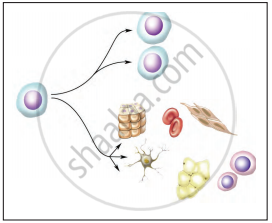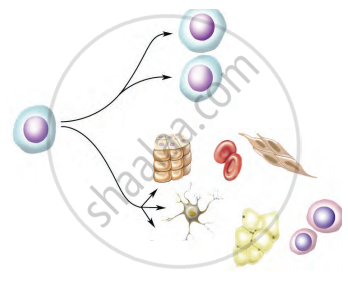Advertisements
Advertisements
प्रश्न
Find an odd one out.
विकल्प
Diabetes
Anaemia
Leukemia
Thalassemia
उत्तर
Diabetes
APPEARS IN
संबंधित प्रश्न
What are stem cells?
At the earliest stage of development, the organism is in the form of a mass of a cell, which are almost alike, those cells are called ____________.
_____________ is the revolutionary event in biotechnology after cloning.
Cell _____________ starts from 14th day of conception.
For the purpose of preservation stem cell samples are kept in __________.
The number of different types of cells in the human body that are formed from embryonic cells.
Give scientific reason.
Stem cells are extremely important in regenerative therapy.
State two types of stem cells.
What is the importance of stem cells in medical science?
Complete the paragraph.
(red bone marrow, degenerated, umbilical cord, adipose, division, blastocyst)
Different tissues of the body are formed by _______ of stem cells. Stem cells are present in the _______ by which the fetus is joined to the uterus of the mother. Stem cells are also present in the _______ stage of embryonic development. Stem cells are present in _______ and _______ connective tissue of adult human beings. It has become possible to produce different types of tissues and the _______ part of any organ with the help of these stem cells.
Identify the given figure and label it.

Explain the statement.
The revolutionary phenomenon in biotechnology after cloning is stem cell research.
______ cells are undifferentiated mass of cells.
Name the types of stem cells
How are stem cells useful in regenerative process?

- Which process is shown in the given diagram?
- What is the importance of this process?
- Which organs can be transplanted by this process?
